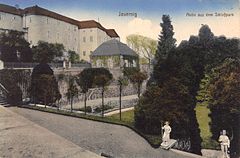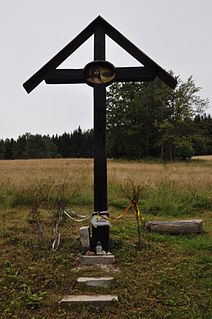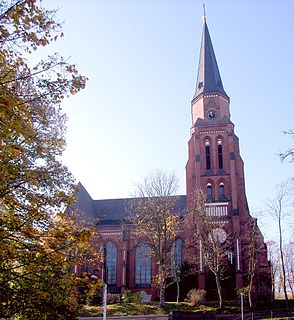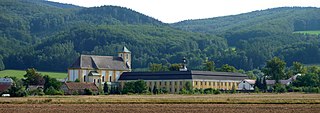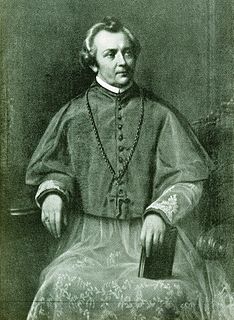This article includes a list of references, related reading or external links, but its sources remain unclear because it lacks inline citations .(March 2012) (Learn how and when to remove this template message) |
| Jánský vrch | |
|---|---|
Castle Jánský vrch, view from the castle gardens (ca. 1920) | |
| General information | |
| Architectural style | Renaissance, Baroque |
| Town or city | Javorník |
| Country | Czech Republic |
| Coordinates | 50°23′23″N17°00′00″E / 50.3896°N 16.9999°E |
Jánský vrch (German : Schloß Johannesberg) is a castle located in the Jeseník District, which lies in the Olomouc Region of the Czech Republic. The castle stands on a hill above the town of Javorník (Jauernig in German) in the north-western edge of Czech Silesia, in area what was a part of the Duchy of Nysa. For most of its history the castle belonged to the Prince-bishops of Breslau (Wrocław) in Silesia.

German is a West Germanic language that is mainly spoken in Central Europe. It is the most widely spoken and official or co-official language in Germany, Austria, Switzerland, South Tyrol (Italy), the German-speaking Community of Belgium, and Liechtenstein. It is also one of the three official languages of Luxembourg and a co-official language in the Opole Voivodeship in Poland. The languages which are most similar to German are the other members of the West Germanic language branch: Afrikaans, Dutch, English, the Frisian languages, Low German/Low Saxon, Luxembourgish, and Yiddish. There are also strong similarities in vocabulary with Danish, Norwegian and Swedish, although those belong to the North Germanic group. German is the second most widely spoken Germanic language, after English.

Jeseník District is a district (okres) in the Olomouc Region of the Czech Republic. Its seat is the town Jeseník.

Olomouc Region is an administrative unit of the Czech Republic, located in the north-western and central part of its historical region of Moravia (Morava) and in a small part of the historical region of Czech Silesia. It is named for its capital Olomouc.
